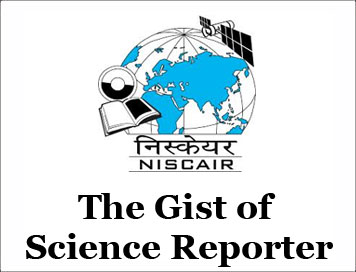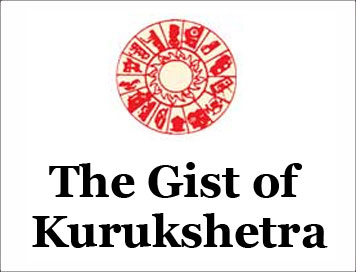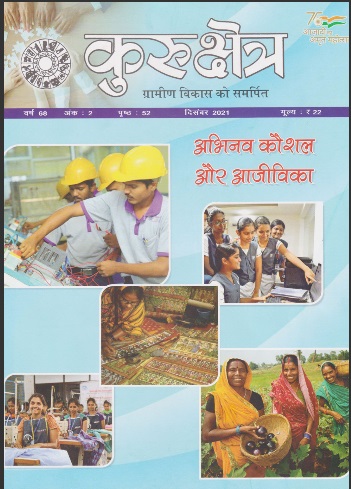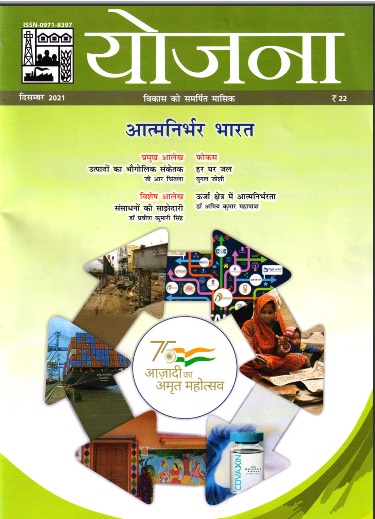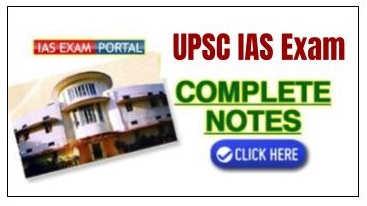
Sample Material of Current Public Administration Magazine
1.Accountability & Responsibility
-
Judges cannot be shielded from citizens’ questions
Since the Supreme Court’s highly controversial judgment in the ADM Jabalpur case in 1976, whereby it was held that during the Emergency the right to life and personal liberty of a citizen under Article 21 of the Constitution would remain suspended, the judiciary has not only come under critical scrutiny but also under attack. The judgment has since been overruled, but its reversal goes to prove the fact that judges are not infallible, and that “to err is human”. Recently, the Chief Justice of India, in his own mild way, protested against the attack on judges. One can understand his pain and agony, but he too knows that judges do not, and should not live in ivory towers. They sit in open court, speak out under the public gaze and deliver judgments that come into the public domain. As the judiciary is one of the pillars of democracy, and the Constitution entrusts judges with the task of protecting the constitutional rights of the people, especially the right to life and liberty, the consumer of justice has every right, and would be fully justified in critically examining, and commenting upon each and every word of the judges spoken or written, howsoever unpalatable it may be. Of course, none has the right to make personal attacks on judges.
It appears that it is in the above spirit that the other day, Congress MP Shashi Tharoor, speaking in Parliament on the High Court and Supreme Court Judges (Salaries and Conditions of Service) Amendment Bill said that the judiciary had failed to stem the tide of militant majoritarianism. He alleged that the “judiciary’s inaction almost always favours those in power”. He further alleged that “by its continued inaction, the court has not only allowed the government’s sins against citizens to go unpunished, but led some critics to ask whether the Supreme Court should also be considered an accomplice to the violation of rights granted by the Constitution.” In the same debate, a Trinamool MP criticised the transfer of former Madras High Court Chief Justice Sanjib Banerjee as the Chief Justice of Meghalaya High Court.
One may or may not agree with the bluntness with which Tharoor spoke about the judiciary. However, what cannot be denied is that he has raised pertinent questions, and has brought out the glaring failings of the judiciary in matters concerning the protection of the constitutional rights of citizens. Otherwise, why is it that matters pertaining to the abrogation of Article 370 of the Constitution, the Citizenship Amendment Act, Electoral bonds, and many petitions under the preventive detention laws are lying in cold storage? These are cases that are of grave national importance, and concern the life and liberty of citizens. And also, why are some bail applications taken up in a day or two, while others remain pending for months? In the words of Lord Mansfield, “let justice be done though heavens fall”.
2. Indian Government and Politics
-
Why India will be scrutinised at Summit for Democracy
On December 9 and 10, US President Joe Biden will host a virtual “summit for democracy”, which will bring together leaders of 100 countries, civil society and private sector representatives “to set forth an affirmative agenda for democratic renewal and to tackle the greatest threats faced by democracies today through collective action”. The list of invitees is intriguing: From the South Asian region, besides Taliban-ruled Afghanistan, three democracies, Bhutan, Bangladesh and Sri Lanka — the latter two with democracy-deficit challenges similar to India’s — did not get an invitation, but Pakistan, where the Army calls the shots, is an invitee. More such contradictions plague the list.
For India, the summit comes at a piquant moment. The world’s largest, most populous democracy is now regularly described as authoritarian. The US-based Freedom House’s “Freedoms of the World” index categorises India as only “partly free”; the Swedish V-Dem calls India an “electoral autocracy”; others lump India with Hungary, Turkey and the Philippines, where authoritarian leaders rule the roost. Rights violations in Kashmir, where India snatched the record for the world’s longest internet ban from Myanmar, the conflation of political dissent with the colonial-era crime of sedition, the use of anti-terrorism laws to silence critics, the failure of the state to ensure freedoms guaranteed by the Constitution, the anti-Muslim amendments to citizenship laws, and the China-like control over citizens that India aspires to, including with invasive high-tech surveillance, have all but shredded India’s democratic image. Only last week, the UN Human Rights Office castigated India for the arrest of rights activist Khurram Parvez in Kashmir, and the “increasing” use of the UAPA to “stifle the work of human rights defenders, journalists and other critics in Jammu & Kashmir and other parts of India”.
Given this, the agenda of the summit holds contemporary resonance in India. According to the State Department, the summit will convene around three broad themes — defending democracy against authoritarianism, addressing and fighting corruption, and promoting respect for human rights. Leaders will be “encouraged” to announce “specific actions and commitments” to meaningful domestic reforms and international initiatives that advance the summit’s goals.
3. Social Administration
-
New leaders to tackle climate change challenge
I did not intend to write about COP26. Much has already been written about the subject and I am no climate change expert. But I changed my mind after reading Ashlee Vance’s biography of Elon Musk. The book triggered the reflection that the current gap between the ambitious rhetoric of climate change summitry (“blah blah” in Greta Thunberg’s words) and action can only be bridged by shifting the loci of responsibility and authority for climate change governance from those fixated on the short-term and, in the larger scheme of matters, inconsequential details like the next elections, to those who have a track record of bringing about radical change in the face of adversity. I know this reflection goes against the structure of the present international order and I will be critiqued for engaging in an academic parlour game. But I believe, on occasion, there is merit in arguing the counterfactual. That is why I share my thoughts.
After 26 meetings, it is clear COP summitry can make incremental progress. The world has, however, run out of time. It must accelerate the implementation of the action plan towards net zero. For that, it must redesign the nature of climate change governance.
COP26 was not all “blah blah”. Ninety per cent of the world committed to a net carbon zero target; 23 countries agreed to stop financing fossil fuels by the end of 2022; 100 countries committed to end deforestation; the accounting systems for calculating carbon emissions were finalised and notably, the phase down of coal and inefficient fuel subsidies was accepted. On the substantive issue of climate finance, however, it was still “blah blah”. The earlier pledge by the developed world to channel $100 billion to the less developed was not met; they committed a lowly $346 million to the climate adaptation fund. PM Modi’s call that $1 trillion be raised for climate mitigation and adaptation was not taken up seriously.
The NGO, Climate Action Tracker, has analysed the consequences of COP incrementalism. They calculate that were there no climate change policy, global temperatures would rise by between 4.1 and 4.8 degrees C above pre-industrial levels. This would be existentially catastrophic. Were, however, every country to implement their non-binding nationally determined commitments for 2030, the temperature rise would be 2.4 degrees C and, if over and above that, they met their binding commitments including net zero targets, the increase would range between 1.8 and 2.1degrees C. Their message is: The increase can be kept within a “sustainable” range but further prevarication in the implementation of the action plan towards net zero carbon will push the increase above an acceptable threshold with devastating consequences.
4. Current Topic
-
The politics-policy disconnect in India
There’s a breakdown between politics and policy in India. Decision-making on virtually all governance issues is disconnected from politics and the mobilisation of public opinion. The repeal of the farm laws is thus a notable instance of politics and policy coming together, although in conflict. What is striking, however, is that the politics came from farmers’ groups, not political parties. The manner in which the government rammed through the three bills, tried to bully and delegitimise the protests and then repealed the laws shows that not only did the government not attempt to build consensus in favour of the bills, but that the channels of feedback from the ground were themselves not functioning properly. The Opposition was supportive of the protests but, with some notable local exceptions, had little role to play in the actual mobilisation of public opinion on the ground. The Opposition speaking in one voice in the Parliament helped, but the heavy lifting of organising in the villages and sustaining the protests was done by the farmers’ groups.
This disconnect between politics and policy is not a recent development, though it manifests differently across political divides. The liberal side has a policy-first lens but is unable to articulate its ideas in a manner which makes for good politics, repeatedly couching its ideas in a bureaucratic framework disconnected from political organisation. The impetus for a bureaucracy-first policy framework stems from the desire to remove local political discretion, which is assumed to be anti-people; the result, however, is to increase the distance between the policy initiative and the political organisation and thus the conduit for outreach and communication with the public. Moreover, bureaucracy is downstream from politics and this approach rather than curbing the state may have instead contributed to undermining the democratic process of political accountability since the political class is, by design, not central to the policy in the first place.
The right, on its side, has a politics-first lens but it derives its politics largely from its social agenda instead of issues of governance. In India, the right has a conception of a Hindu India but it lacks conceptual clarity and a governance agenda for the state. The policy imperatives, if any, are ad hoc and appear to be driven by the demands of running the political apparatus instead of a clear governance agenda. Instead, the right mobilises public opinion around cultural and community issues where the expectation from the state is not necessarily governance but patronage and protection for preferred social groups. Despite these differences, what is common across parties is the apolitical harnessing of the state as a disburser of different kinds of economic largesse, especially just before elections, as political parties cast about for simple ideas for easy mass communication.
5. Indian Administration
-
Remember how the Constitution was brought into being
In 1922, a 30-year-old English poet published a long poem, a modern-day epic by common consent. A century later, T S Eliot’s The Waste Land resonates in India, not because of its prophecy or satire, but because of a curious tale it picked up from the Brihad Aranyaka. The Aranyaka, the earliest among the Upanishads, is a treasure trove of mythical stories, one of which appears in the fifth section of The Waste Land, titled ‘What the Thunder Said.’
This is how it goes: After Prajapati, the creator, had made beings and things, he danced in a frenzy, shouting, “da, da, da…” He then assembled his progeny — the devas, danavas and manavas — and asked if they had understood what he said. The devas said “da” is damyata: “learn self-control”; the manavas thought, he had said datta: “learn to overcome greed”; the danavas said it was dayadhvam: “learn to forgive”. Prajapati laughed enigmatically and said, “Well, you seem to have understood, perhaps.”
Without forgetting that this is a myth and not history, I have often wondered if there has been a moment in India’s history when the praja danced in ecstasy, as did Prajapati, for having created what had to be created. I like to believe that November 26, 1949, was that moment – we, the people, adopted, enacted and gave unto ourselves the Constitution, which gave to every Indian a hope that no past era had provided. What diverse responses does it evoke now?
Remembering the day, the constitutional head of India’s judiciary said that the “citizenry of independent India” has breathed life into “what might otherwise have been just another bare document”. Many freedom fighters, such as Gandhi, Ambedkar, Nehru, Lajpat Rai, Patel and Alladi Krishnaswamy Iyer, he reminded the nation, were lawyers. His appreciation of “litigants, judges, law-makers and lawyers” reminded the country that it is the people who matter above all. The response to Samvidhan Divas by the principal opposition party was to remind the Prime Minister that the institutions envisioned by the Constitution have been rendered dysfunctional during his regime and “the Constitution was being undermined every day”. The thoughts of the Prime Minister on the day revolved round his pet theme of dynastic politics as a threat to democracy, colonial mindset and “misuse of the freedom enshrined in the Constitution” as a hindrance in the country’s development. His irritation towards those he believes to be hindering development was clear in word and tone.



